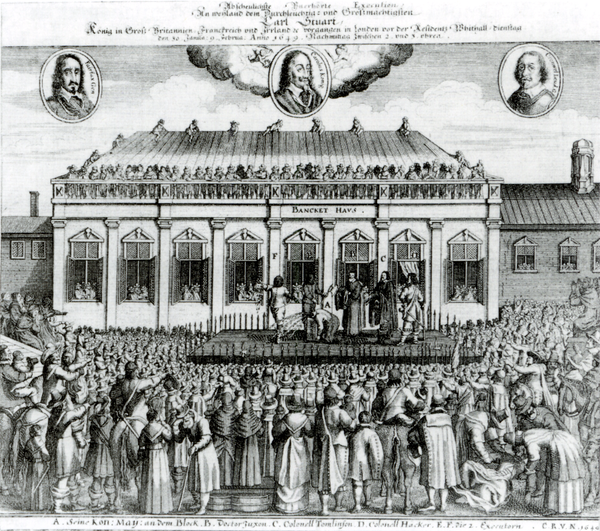Who executed Charles?
Charles I was executed on 30 January 1649. It was so cold that Charles requested clothes to wear underneath his execution outfit: he was worried the audience would be able to see him shivering and think it was out of fear. But of all we know about this day, the question of who executed Charles I remains a mystery.
The story goes that regular executioner, Richard Brandon, refused to execute a divinely ordained king. Officials were forced to delay the execution so that they could find a replacement. Eventually, a man and his assistant agreed to carry out the task - but on the condition that they could wear masks to protect their identity.
Various theories have been put forward as to who executed Charles. One such theory is that the executioner was in fact Richard Brandon. Perhaps Brandon pretended to refuse executing the king to protect himself, and then carried out the execution behind a mask.

In 1660, a man called William Hulet was put on trial for carrying out the deed. One witness, Richard Gittens, claimed that he had recognised Hulet’s voice at the execution when the executioner had asked Charles to forgive him. However, a number of witnesses for the defence claimed that Richard Brandon had privately admitted on a number of occasions to beheading Charles. William Cox, for example, claimed that he had heard Brandon admit to Lord Capel – who was about to be executed – that he had carried out the deed. According to Cox, Brandon admitted that he was paid a considerable sum of money (£30) for executing the king. Hulet was found not guilty at his trial and released.
The case against Brandon developed after he died in June 1649. ‘The Confession of a Hangman’ stated that Brandon had confessed to executing Charles for £30 and that he had been paid less than 60 minutes after the execution. In this ‘confession’ Brandon admitted that he had taken a silk handkerchief from Charles’ corpse. The document also revealed that his burial at a church in Whitechapel took place in dramatic circumstances, with crowds shouting ‘hang him, the rogue’ and ‘bury him in a dunghill’. The local City population clearly believed that Brandon had been the executioner.
The executioner’s assistant is also unknown. One opinion is that he was a Parliamentarian named George Joyce. Joyce made his name by seizing Charles at Holdenby House and bringing him to Newmarket, probably with Oliver Cromwell’s support and knowledge. The principal evidence against Joyce came from an astrologer called William Lilly. Lilly described a dinner he attended to a Parliamentary Committee. At the same dinner was Robert Spavin, Cromwell’s secretary. Lilly claimed that the sole discussion at the dinner was the execution of Charles, which had only recently taken place. One person at the dinner claimed that the executioner was “the Common Hangman” (a reference to Richard Brandon’s official title). However, Spavin claimed that the executioner’s assistant was Lieutenant Colonel Joyce, and that only Cromwell, Ireton and he himself knew this.
After Lilly gave his evidence, Joyce’s arrest was ordered. However, he fled with his family to the Netherlands before he could be caught. Joyce’s speedy escape could indicate guilt, but it might also merely indicate his fear of being arrested and made a scapegoat for the execution.
See also: The Death Sentence of Charles I
MLA Citation/Reference
"Who executed Charles?". HistoryLearning.com. 2026. Web.
